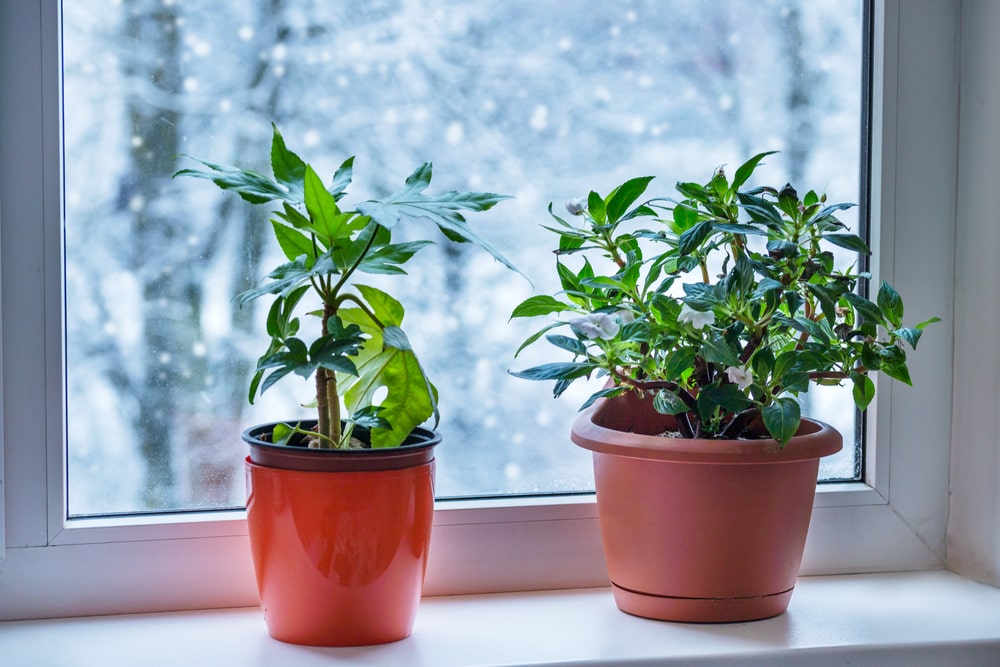The days are short, and the sunlight is weak. So, what can I do with my houseplants this time of year?
Remember that humidity is almost non-existent indoors, and lighting is much less than these tropical plants are used to. So here are some things to keep in mind.
- Because the light and day length are much less than their natural environment, it will affect the watering. Yes, indoor air is much drier than outdoors, but the lower light level affects the watering even more. Most plants will stay wet longer when watering, so check the soil with your fingers. Most house plants in 4- to 6-inch pots can dry out an inch (or more) down. Plants in 8 or 10-inch pots should dry out about three inches down. Plants in 12-inch plus pots should dry out at least a whole finger-length down—just not so dry that the leaves on the plant begin to droop. Cacti and succulents should dry out almost completely.
- Because the light is lower, most plants should NOT be repotted or fertilized this time of year. With lower light, most plants slow their growth down. Repotting needs a plant actively growing to grow new roots in the new soil. Fertilizing pushes a plant to send out new growth when it doesn’t want to because the days are short and the light weak.
- Do consider supplemental lighting for sun-loving plants like succulents, bougainvillea, citrus, some orchids, and certain varieties of ficus trees. I have four citrus in a south-facing window and find better results when I augment with a grow light on cloudy days.
- Some plants tolerate the dry indoor air, but some don’t. Consider upping the humidity for ferns, palms, orchids, and citrus. I have a LOT of indoor plants, so a humidifier is a must. You can mist a couple of times a day if you want. Remember, misting raises the humidity around your plant, so set your mister on a fine mist and mist the air over and around your plant. Do NOT mist directly on the plant so heavily that the water drips into the soil.
- Watch for drafts. Neither warm nor cold air should be blowing directly on a plant. Try not to place plants near heat registers or outside doors that will be opened and closed often.
- Check plants every couple of weeks for insects—scale, aphids, spider mites, and mealy bugs can attack indoor plants and, if left unchecked, can develop into a real problem. Look for tiny greenish or yellowish bugs clustered on tiny new growth or small flower buds—these are probably aphids and can be easily wiped or washed off. If you see fine white webbing on the backs of leaves or where leaves and stems attach to other stems, these are likely spider mites. An organic spray like Neem oil will take care of it. Raised brown or tan bumps that you can flake off with your fingernail are likely scale insects and should be treated with a horticultural oil. What looks like fuzzy bits of cotton fuzz are most like mealy bugs and can be treated with Neem oil.
- Enjoy the beautiful greenery and appreciate the fresh, clean air plants contribute to your environment.
Need More Advice?
If you have any questions or need any advice, we’re here for that!

